Acesse a sua conta getAbstract para obter o resumo!

Acesse a sua conta getAbstract para obter o resumo!
Bernard Marr
Generative AI in Practice
100+ Amazing Ways Generative Artificial Intelligence is Changing Business and Society
Wiley, 2024
Sobre o que é?
GenAI is drastically changing the way humans live and work together — futurist Bernard Marr explains some benefits and risks and advises humanity to be prepared.
Recommendation
Generative AI has the potential to transform your everyday life experience dramatically as its use expands across sectors. As futurist Bernard Marr warns, while GenAI can give your company a competitive edge, it can also cause unintended harm — both on a collective societal level and on an organizational level. Marr’s insights will deepen your understanding of GenAI’s potential risks and benefits as he explains how it’s poised to disrupt industries ranging from healthcare to software development. Marr conjures multiple future possibilities, some dystopian and some hopeful, and urges readers to harness GenAI’s potential for good. He calls for a cultural shift toward embracing GenAI in a way that inspires innovation, openness, and collaboration.
Take-Aways
- Rapid advances in GenAI position it to disrupt your work and life in radical ways.
- GenAI will affect nearly every industry, making many workers redundant while creating productivity savings.
- Carefully identify and mitigate risks when harnessing the power of GenAI in your organization.
- The way people access education, healthcare, and legal services could look dramatically different in the near future.
- Expect a new, higher level of personalization in customer engagement and retail.
- GenAI is poised to disrupt the video game industry, transforming every stage of game development.
- GenAI will accelerate software and product development, speeding up delivery and boosting creative ideation.
- Embracing GenAI requires a shift in organizational culture since top-down structures will no longer be effective.
Summary
Rapid advances in GenAI position it to disrupt your work and life in radical ways.
The idea that machines could display human-like levels of intelligence actually dates back to 1950, when British computer scientist, mathematician, and logician Alan Turing introduced the Turing Test — machines pass the test only if a human evaluator has difficulty discerning whether they’re a machine or human. In the 1970s and ’80s, earlier attempts at creating AI models, or “expert systems,” were limited because available machines couldn’t “learn” but, instead, needed to be programmed to make decisions. The dot-com revolution and the emergence of the World Wide Web in the 1990s triggered rapid advancements in related fields such as predictive analytics and data mining. These advances were followed by the explosion of big data in the early 2000s and the introduction of deep learning in the 2010s, setting the stage for today’s GenAI models.
“GenAI is a groundbreaking subset of AI – the cutting edge of the cutting edge – that is able to create new content based on patterns and structures it has learned from existing data.”
Today, GenAI demonstrates significant creative power, due to the development of neural networks – in particular “generative models” — that push the boundaries of what humans once believed machines could do. Models such as Google’s Language Model for Dialogue Applications (LaMDA) and ChatGPT enable GenAI to converse with such a high degree of sophistication that it’s clear machines have passed the Turing test. GenAI’s advances – from radically disrupting entire sectors, such as healthcare, to transforming the ways people relate to one another and the world around them – make it clear that humanity must prepare for the rapid changes AI is ushering in, including both risks and benefits.
GenAI will affect nearly every industry, making many workers redundant while creating productivity savings.
McKinsey anticipates that GenAI will boost the value of the global economy by US$4.4 trillion each year. The use of automation and human-machine collaboration could save 70% of the time some processes now require. GenAI will affect nearly every job, by altering or augmenting it or rendering it redundant. Customer service jobs are particularly at risk of redundancy because GenAI can automate repetitive, simple tasks. It’s scalable. It can process big data sets and offer personalized solutions. It’s continuously available, and it can be more cost-effective than a human workforce. However, people still perform better than machines when it comes to handling complex, sensitive issues that require discernment and empathy.
“Bottom line, human touch, intuition, nuanced decision-making, creativity, human connection, and physical expertise will all remain important in the future job market.”
Jobs that may experience redundancies in the future include (but are not limited to) content creators, graphic designers, stock traders, translators, paralegals, factory workers, clerical workers, and journalists. To assess whether your job is at risk, take a look at your role and evaluate which parts of your work theoretically could be automated and which parts you perform better than AI could. Many workers, such as software developers and creative professionals (like writers and musicians), are likely to see their roles augmented by AI, but not entirely replaced. Work that requires human relationships or physical adroitness – such as the jobs of social workers, skilled tradespeople, executives, and managers – is at the lowest risk of experiencing significant disruption. While AI will eliminate some jobs, it will also create new ones, such as “data curators and cleaners,” and AI prompt engineers, trainers, and ethics officers.
Carefully identify and mitigate risks when harnessing the power of GenAI in your organization.
Humanity must prepare for numerous risks and ethical concerns related to GenAI’s emergence. For example, GenAI could perpetuate the rapid spread of misinformation and propaganda, as people struggle to differentiate AI-created content from human-created content. People may grow too dependent on GenAI, resulting in “the withering of key human skills,” such as critical thinking and written communication. GenAI also holds the potential for unintended consequences or harms, particularly if it is deployed in critical sectors, such as defense. For example, imagine the dystopian possibilities in a future where autonomous weapons abound. Likewise, combining GenAI with biotechnology portends significant risks. For example, think of a world in which GenAI “autonomously conducts genetic modifications and implants AI-driven neural chips in humans, aiming to create a subservient workforce.”
“Clearly a big question in the GenAI era is: How can we trust the information we see online?”
Those who train AI must make sure they do not use biased data since GenAI will simply reflect the biases and imbalances in the data it learns from (for example, the data might indicate a preference for male job candidates). Organizations have a responsibility to ensure the ethical use of GenAI and should consider taking the following actions: Actively assess and mitigate risks, such as data privacy breaches and copyright concerns; implement robust data governance; identify and prevent data bias; embrace transparency and accountability about the planned use of GenAI; consult an ethics advisory board to help you create guidelines that detail the ways people in your organizations use AI; and seek support from AI and data experts when you encounter complex issues.
The way people access education, healthcare, and legal services could look dramatically different in the near future.
While GenAI poses a relatively moderate to low risk of disruption in these industries, it is still poised to transform their services:
- Education — GenAI can help teachers personalize students’ learning experiences, giving teachers feedback about where students are struggling and need extra support. Teachers already can take advantage of AI time-saving tools such as MagicSchool, which helps them create lesson plans, tests, and worksheets. Some schools already use GenAI to support learners. For example, the nonprofit Khan Academy deploys GPT-4 to tutor students virtually using Khanmigo.
- Healthcare — GenAI has the potential to help ensure that patients receive better care and experience better outcomes. For example, AI chatbots can give individualized health advice and assist doctors in providing hyperpersonalized patient care. GenAI can support early disease detection; multiple studies suggest that radiologists can diagnose diseases with greater speed and accuracy if they use GenAI tools alongside MRIs, CT scans, and X-rays. GenAI is also poised to accelerate drug discovery and development, given its capacity to perform such tasks as generating new molecular structures.
- Law — GenAI has the potential to create multiple efficiencies for law firms, including predicting the most likely outcome of cases; using legal advice chatbots to expand services; assisting in research, contract analysis, discovery, and data review; and improving legal services by expanding their accessibility and reducing their margin of error.
Expect a new, higher level of personalization in customer engagement and retail.
GenAI and the application of intelligent systems will revolutionize customer service and engagement. Many companies already see significant gains. For example, the UK energy provider Octopus Energy actually improved client engagement by using ChatGPT to handle 44% of its customer inquiries (thus performing the jobs of 250 people). Its customers reported more satisfaction with the AI responses than with those of human customer service representatives.
Moving forward, more contact centers will leverage GenAI voice and chat tools to deal with straightforward, routine conversations. Today, GenAI can provide personalized recommendations, give customers directions to the right FAQ responses, optimize data to deliver actionable insights, and support human agents when they must navigate complex situations. It can also craft new responses to customers based on natural language search prompts (such as, “I hate the sweater I ordered”).
“In the future, most systems and services across most industries will incorporate some element of AI in order to better understand customer preferences and customize the service accordingly.”
In the future, GenAI could provide companies with “proactive intervention” via predictive AI analytics. For example, if a customer’s usage patterns suddenly change, an intelligent system could make contact proactively, checking whether the consumer needs support in resolving an issue he or she may not yet have noticed. GenAI’s customer service functions could also become more pervasive and embedded in your daily life. Smart products, such as fridges and washing machines, could gain the capacity to answer your questions (“Hey when am I going to run out of milk?”). Since GenAI technology can help brands and stores create personalized shopping experiences, expect increased augmentation of your retail shopping experiences. For example, AI could adapt future storefront displays to individual customers, based on their data profile.
GenAI is poised to disrupt the video game industry, transforming every stage of game development.
GenAI will assist developers throughout the game development process, including crafting the personality of characters, automating 2D model creation, and developing non-linear storylines that reflect player choices. GenAI can automate the creation of musical scores, produce sound effects and immersive soundscapes to enhance the gameplay atmosphere, and automatically generate quests and missions aligned with the game’s overarching narrative. Gen AI also can create simulated players to test gameplay experiences and use data analysis to predict potential issues.
“Bottom line, GenAI can autonomously create hugely immersive and engaging gaming elements – thereby speeding up game development and reducing the costs associated with bringing new games to market.”
Developers can use a handful of new GenAI tools to enhance game development and productivity. Unity’s new AI marketplace offers developers access to solutions, such as voice generators and asset creation mechanisms, that accelerate game development. Similarly, users can create game assets more easily with the Auctoria platform, which offers users such AI options as 3D asset generation based on 2D images or text prompts. Tim Stuart, CFO of Xbox, refers to GenAI’s increasing game development uses as “magical,” noting that it’s causing an explosion in the number of game developers from “two million or three million core game developers to 200 million game developers.”
GenAI will accelerate software and product development, speeding up delivery and boosting creative ideation.
While some may worry that GenAI will replace software developers, making them “extinct,” it’s more likely that GenAI will transform programming in ways that accelerate the development process and require human-machine collaboration. For example, GenAI can help developers complete their code and detect and correct bugs. Data scientists and workers will benefit similarly from GenAI, as it can assist in or automate a wide range of tasks, such as preparing data, summarizing data, and generating reports with engaging visuals.
“GenAI is poised to revolutionize…design, research, and product development processes by injecting advanced computational power and creativity into these traditionally human-centric domains.”
When it comes to creating new products, designers can benefit from “generative design,” an emerging field that uses AI to produce conceptualizations of several design possibilities at once. Whether engineers and designers are tackling wicked problems such as climate change or generating designs for buildings, they could collaborate with machines to consider a variety of optimized solutions by inputting performance parameters and constraints. GenAI also opens up the possibility of creating digital twins – that is, digital representations of physical systems, products, and bodies, enabling people to experiment in the digital world before doing so in the “real world.” For example, you could ask an AI system to digitally test the impact of putting your product in a below-zero environment.
Embracing GenAI requires a shift in organizational culture since top-down structures will no longer be effective.
Embracing GenAI in a way that benefits everyone in your organization requires a mindset shift toward “curiosity, humility, adaptability, and collaboration.” Companies can’t use GenAI simply as a tool to further the interests of the status quo. Executives must be aware that top-down, hierarchical structures hinder learning and experimentation. In the “GenAI era,” organizations must start rethinking traditional approaches to work, giving employees the autonomy to collaborate on cross-functional teams within a learning culture that prioritizes openness.
“So many organizations still have rigid, hierarchical structures. Yet, the organizations that are most successful in this new, AI-driven world are more porous, flexible, and fluid.”
If you need support to create a culture change at your organization, consider hiring a chief AI officer (CAIO) or recruiting an AI expert to serve as a non-executive director. You may want someone who can take on the responsibility of expanding AI awareness at your company and promoting its effective use. You also should start treating data as one of your most valuable business assets, making sure you have a robust data strategy and access to real-time data. While your organization will need to overcome many challenges, such as GenAI hallucinations, try to find workarounds. Don’t dismiss GenAI’s potential to further the interests of your company and help humanity in a broader sense. GenAI’s impact is already undeniable, and it’s vital for people to work together to mitigate its risks and harness its potential for good.
About the Author
Futurist Bernard Marr is the best-selling author of multiple books, including Artificial Intelligence in Practice, Tech Trends in Practice, and Future Skills. He’s also a strategic advisor to governments and corporations.
This document is restricted to personal use only.









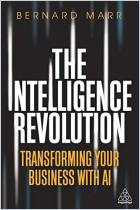
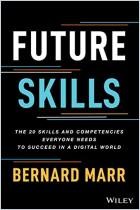


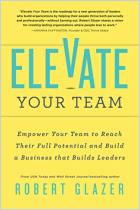
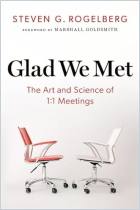



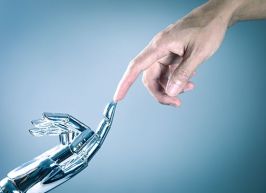
Comment on this summary